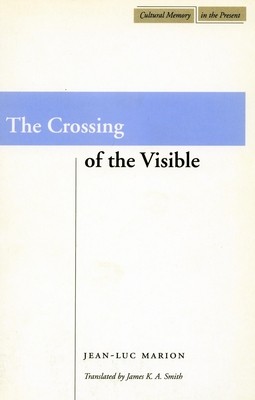
- We will send in 10–14 business days.
- Author: Jean-Luc Marion
- Publisher: Stanford University Press
- ISBN-10: 0804733929
- ISBN-13: 9780804733922
- Format: 15.8 x 23.9 x 0.8 cm, minkšti viršeliai
- Language: English
- SAVE -10% with code: EXTRA
Reviews
Description
Painting, according to Jean-Luc Marion, is a central topic of concern for philosophy, particularly phenomenology. For the question of painting is, at its heart, a question of visibility--of appearance. As such, the painting is a privileged case of the phenomenon; the painting becomes an index for investigating the conditions of appearance--or what Marion describes as phenomenality in general.
In The Crossing of the Visible, Marion takes up just such a project. The natural outgrowth of his earlier reflections on icons, these four studies carefully consider the history of painting--from classical to contemporary--as a fund for phenomenological reflection on the conditions of (in)visibility. Ranging across artists from Raphael to Rothko, Caravaggio to Pollock, The Crossing of the Visible offers both a critique of contemporary accounts of the visual and a constructive alternative. According to Marion, the proper response to the nihilism of postmodernity is not iconoclasm, but rather a radically iconic account of the visual and the arts that opens them to the invisible.
EXTRA 10 % discount with code: EXTRA
The promotion ends in 21d.04:58:17
The discount code is valid when purchasing from 10 €. Discounts do not stack.
- Author: Jean-Luc Marion
- Publisher: Stanford University Press
- ISBN-10: 0804733929
- ISBN-13: 9780804733922
- Format: 15.8 x 23.9 x 0.8 cm, minkšti viršeliai
- Language: English English
Painting, according to Jean-Luc Marion, is a central topic of concern for philosophy, particularly phenomenology. For the question of painting is, at its heart, a question of visibility--of appearance. As such, the painting is a privileged case of the phenomenon; the painting becomes an index for investigating the conditions of appearance--or what Marion describes as phenomenality in general.
In The Crossing of the Visible, Marion takes up just such a project. The natural outgrowth of his earlier reflections on icons, these four studies carefully consider the history of painting--from classical to contemporary--as a fund for phenomenological reflection on the conditions of (in)visibility. Ranging across artists from Raphael to Rothko, Caravaggio to Pollock, The Crossing of the Visible offers both a critique of contemporary accounts of the visual and a constructive alternative. According to Marion, the proper response to the nihilism of postmodernity is not iconoclasm, but rather a radically iconic account of the visual and the arts that opens them to the invisible.


Reviews